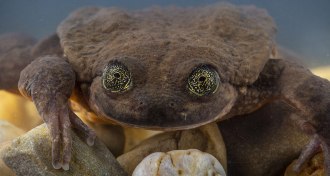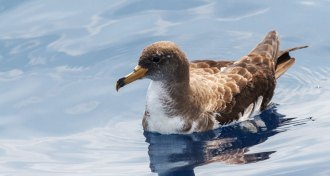Jeremy was a science writing intern with Science News. Previously he worked for Nature Magazine and wrote stories as a freelancer for National Geographic, Scientific American and Science. He has a bachelor’s degree in biology and a Sc.M. in ecology and evolutionary biology from Brown University, where he studied how bats control their wing shape during flight. He enjoys writing about science and society, ecology, conservation, biomedicine, bioengineering and occasional forays into space and planetary science.

Trustworthy journalism comes at a price.
Scientists and journalists share a core belief in questioning, observing and verifying to reach the truth. Science News reports on crucial research and discovery across science disciplines. We need your financial support to make it happen – every contribution makes a difference.
All Stories by Jeremy Rehm
-
 Animals
AnimalsThis rediscovered Bolivian frog species survived deadly chytrid fungus
Scientists recently rediscovered a frog species in Bolivia that hasn’t been seen in 10 years — and it could be used to better understand a frog-killing fungus.
-
 Tech
TechDesalination pours more toxic brine into the ocean than previously thought
Desalination plants help offset the world’s growing water needs, but they also produce much more supersalty water than scientists realized.
-
 Oceans
OceansFloating seabirds provide a novel way to trace ocean currents
Seabirds idly drifting with ocean currents provide a novel way to track and understand how these flows change with time and location.